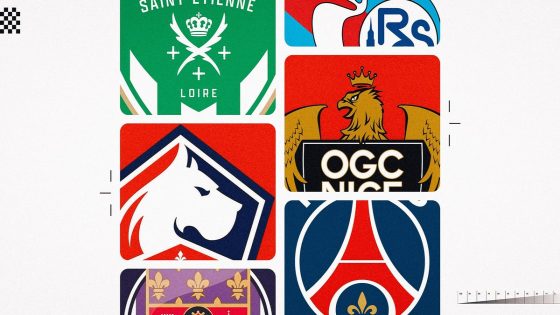What’s in a nickname? That is a question The Athletic will be answering this week, as we trace the origins of football clubs’ monikers in England, Germany, Italy, France, Spain and the rest of the world.
Next, we turn our attention to France…
It will come as no surprise that, for a country whose national team has the nickname Les Bleus, a lot of France’s top sides take their nicknames from the colours they wear.
But not all.
Aside from their love of a varied colour palette, French clubs have a rich variety of monikers and stories behind them. From Oxford and Cambridge and a lucky horse, to a supermarket chain branding, there are some varied stories to tell.
Advertisement
Angers SCO — Les Scoistes, Les Noirs et Blancs (The Black and Whites)
To understand the nickname of newly promoted Angers, whose stadium is named after the great Raymond Kopa (who began his career at Angers in 1949), you need to delve into a bit of history.
They were founded by the Fortin brothers, who were also directors of the Credit de l’Ouest bank. The club initially took the name Sporting Club du Credit de l’Ouest, which was shortened to Sporting Club de l’Ouest (the city of Angers is situated in Pays de la Loire, in western France). Today, they are Angers SCO, and Les Scoistes is taken from that aspect of their name.
They also follow a common trend in French football; a nickname, or surnom, based on their club colours. Angers wear black and white, and as a result are often referred to as Les Noirs et Blancs.
AJ Auxerre — Les Ajaistes, Les Bleus et Blancs (The Blue and Whites)
For most, Auxerre remain synonymous with the remarkable Guy Roux, who managed the club for more than 40 years and took the club from the third tier and into European competition, winning four French Cups in the process.
They are often referred to as L’AJA, with the abbreviation short for Association de la Jeunesse Auxerroise (the youth association of Auxerre). The fans and players are referred to as Les Ajaistes, which riffs off the abbreviation. Les Bleus et Blancs refers to their shirt colours. They are also known as Les Icaunais, which is a reference to the region around the River Yonne.
AS Monaco — Les Monegasques, Les Rouges et Blancs (The Red and Whites)
Monaco has a unique status in the French game. Monaco is a city state independent from France and has been since 1489, but it has been a protectorate since the 17th century.
History aside, those who hail from the principality are known as Monegasques, and that equally applies to their football team. The club is the representative of the principality (the House of Grimaldi, Monaco’s royal family, own a third of the club), and their shirts, which are red and white, take another nickname. Those colours mirror the flag of Monaco.

Prince Albert II of Monaco, pictured taking in a game at the Stade Louis II, named after his great-grandfather (Valery Hache/AFP via Getty Images)
AS Saint-Etienne — Les Verts (The Greens)
Saint-Etienne is famous for its green attire and Les Verts is an apt moniker. But why green? Well, in part, it is linked to the French supermarket chain Casino.
The club was founded on the back of a sports society set up for the chain’s employees. Geoffroy Guichard was the founder of the Casino Group and his son, Pierre Guichard, was the club’s first president in 1933 when it became AS Saint-Etienne. The club, under Guichard, had adopted the colours of the Casino company, green and white, six years earlier.
Advertisement
FC Nantes — Les Canaris (The Canaries)
The nickname ‘The Canaries’ is a popular one for clubs who wear yellow (see also: Norwich City) and Nantes followed that trajectory too, but the club’s colours stem from the team’s creation.
FC Nantes were established in 1943, during World War Two, and saw the merger of five clubs in Nantes. One of the founders, Jean Le Guillou, a construction contractor who made his wealth as a collaborationist in Vichy France, had a stable of racehorses and his star horse, Ali Pacha, was ridden by a jockey who wore a yellow and green jacket. The horse’s success persuaded Nantes to adopt the jockey’s colours.
Le Havre AC — Le Ciel et Marine (The Sky and Navy), Le Club Doyen
Le Havre are renowned for their youth academy today but they have quite a history. They are another whose primary nickname is based on their shirt colour, but there is a distinctly British reason behind it.
The club’s colours are sky blue and navy, the colours of the Universities of Cambridge and Oxford respectively. The sports club was founded in 1872 by English workers at the port of Le Havre. The majority of the club’s early players either attended one of those two rival British universities and so, in 1891, a compromise on colours was reached where both — Cambridge blue and Oxford blue — would appear on the Le Havre jersey.
The club are also known as Le Club Doyen, in recognition of their status as the oldest club in France.
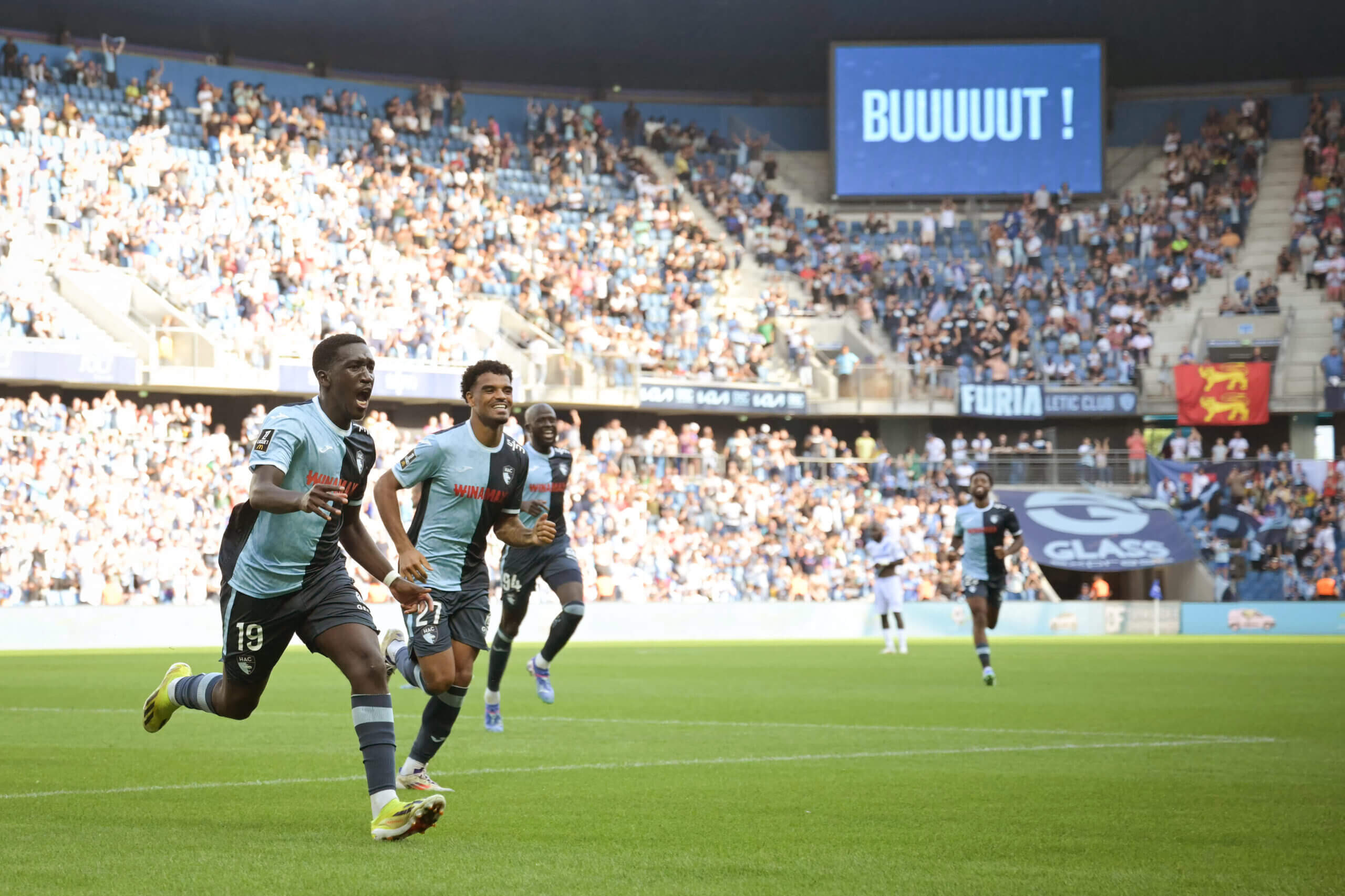
Le Harve: inspired by Oxford and Cambridge Universities (Lou Benoist/AFP via Getty Images)
LOSC Lille — Les Dogues (The Mastiffs)
There is a bit more dispute over this one. Lille’s badge takes the form of the club’s nickname, an image of a Mastiff, which is the literal translation of Les Dogues.
According to historians Maxime Pousset and Damien Boone, in their book Lille, capitale du football francais, the nickname belonged to Olympique Lillois, one of the two clubs that merged to form LOSC (aka Lille Olympique Sporting Club), who were known as Mastiffs from as early as 1919.
Advertisement
However, it is also thought that the name may have stuck to Lille in the late 1940s after they were referred to as Les Dogues by a Parisian journalist, who said they ‘fought like mastiffs’. This wasn’t actually that flattering at the time but Lille made it a strength and the name endures. There is also a statue of a Mastiff at the club’s training ground.
Montpellier Herault SC — La Paillade
A nice and simple one this. La Paillade is the football team’s home district, in the city of Montpellier (located on the south coast of France). Montpellier’s stadium, Stade de la Mosson, is also located in the La Paillade neighbourhood itself.
OGC Nice — Le Gym, Les Aiglons (The Eagles)
INEOS’s French club are known as Le Gym because it’s part of their name (Olympique Gymnaste Club de Nice).
Their association with eagles, hence the nickname Les Aiglons, is taken from the city’s coat of arms. The first record of the eagle emblem of Nice is thought to date back to the 15th century.
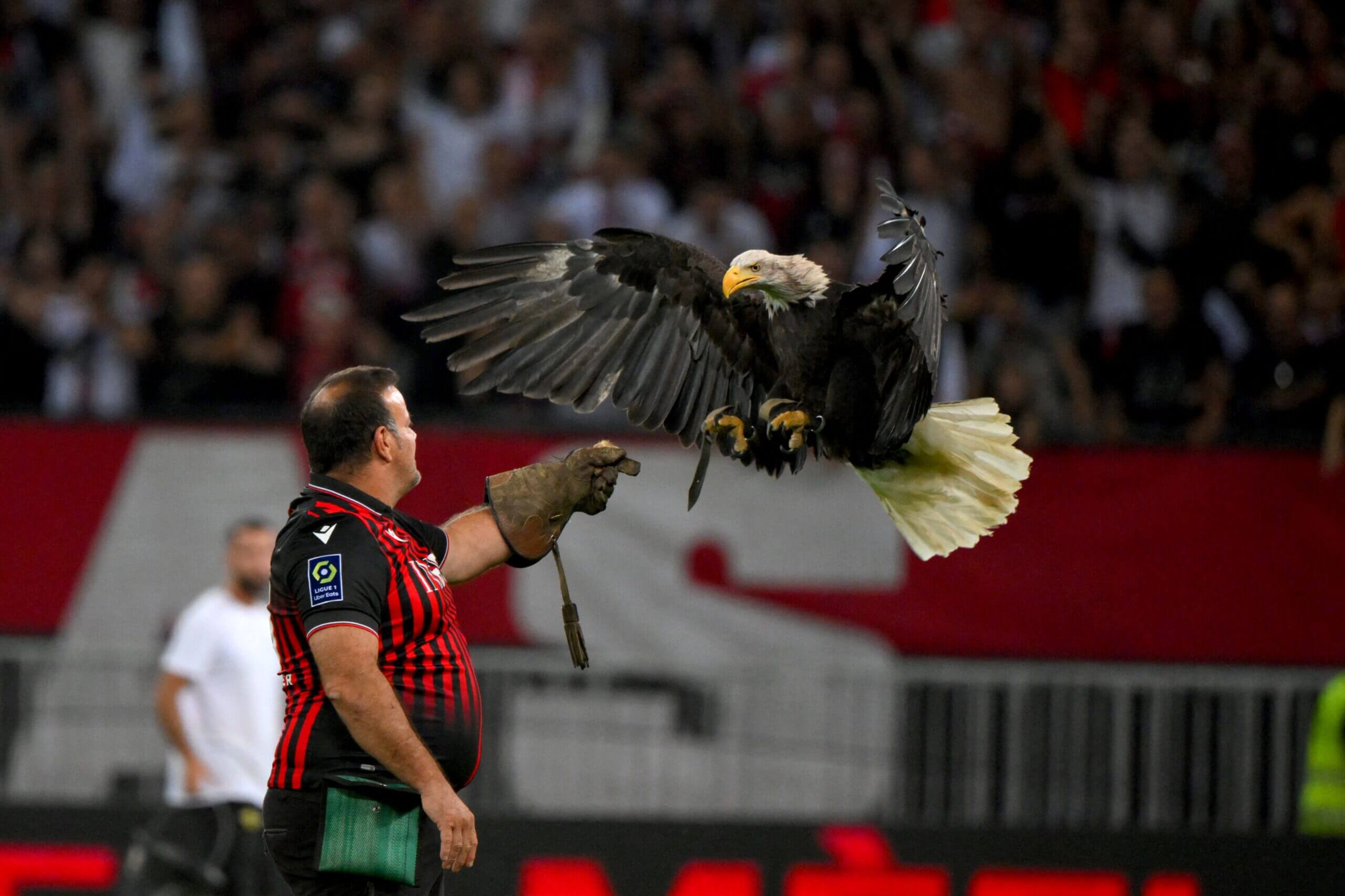
Eagles are all the rage in Nice (Nicolas Tucat/AFP via Getty Images)
Olympique de Marseille — Les Olympiens, Les Phoceens, Les Minots
Another common theme among French football club nicknames is the adoption of local words or slang. Marseille, for instance, are sometimes referred to Les Minots, a term used in Provence, a region in the south of France that includes Marseille, and can mean ‘children’. Similar phrases can be found for clubs including Lyon, Toulouse and Paris Saint-Germain too.
Les Olympiens is a straightforward nickname and their most commonly used one, and it’s taken from the first part of the team’s name. Les Phoceens, meanwhile, is less commonly used but is a reference to the founding myth of the city of Marseille, between ancient Massalia (now Marseille) and the city of Phocea, in Asia Minor (now Turkey). The bond between the two cities, which is referenced by Aristotle, endured over time and led to Marseille being referred to as a Phocaean city, and their inhabitants as Phocaeans.
Olympique Lyonnais — Les Gones (The Kids)
Advertisement
Besides the use of Olympique, there is also a similarity in nicknames between Marseille and Lyon. Lyon’s nickname is more well-known and it translates as an affectionate term for ‘The Kids’. Again, it comes from Lyonnais’s local vernacular. The club’s main supporters’ group have adopted the term, referring to themselves as ‘Bad Gones’.
Paris Saint-Germain — Les Parisiens
Les Parisiens. No prizes for working that one out.
It is worth noting, since we’re on a theme about the use of ‘kids’, that PSG refer to their academy players as ‘titis’, which in part comes from the expression ‘titi Parisien’ — a child of Paris. (The archetype of this expression refers to working-class kids, typified by the character Gavroche, from Victor Hugo’s Les Miserables).
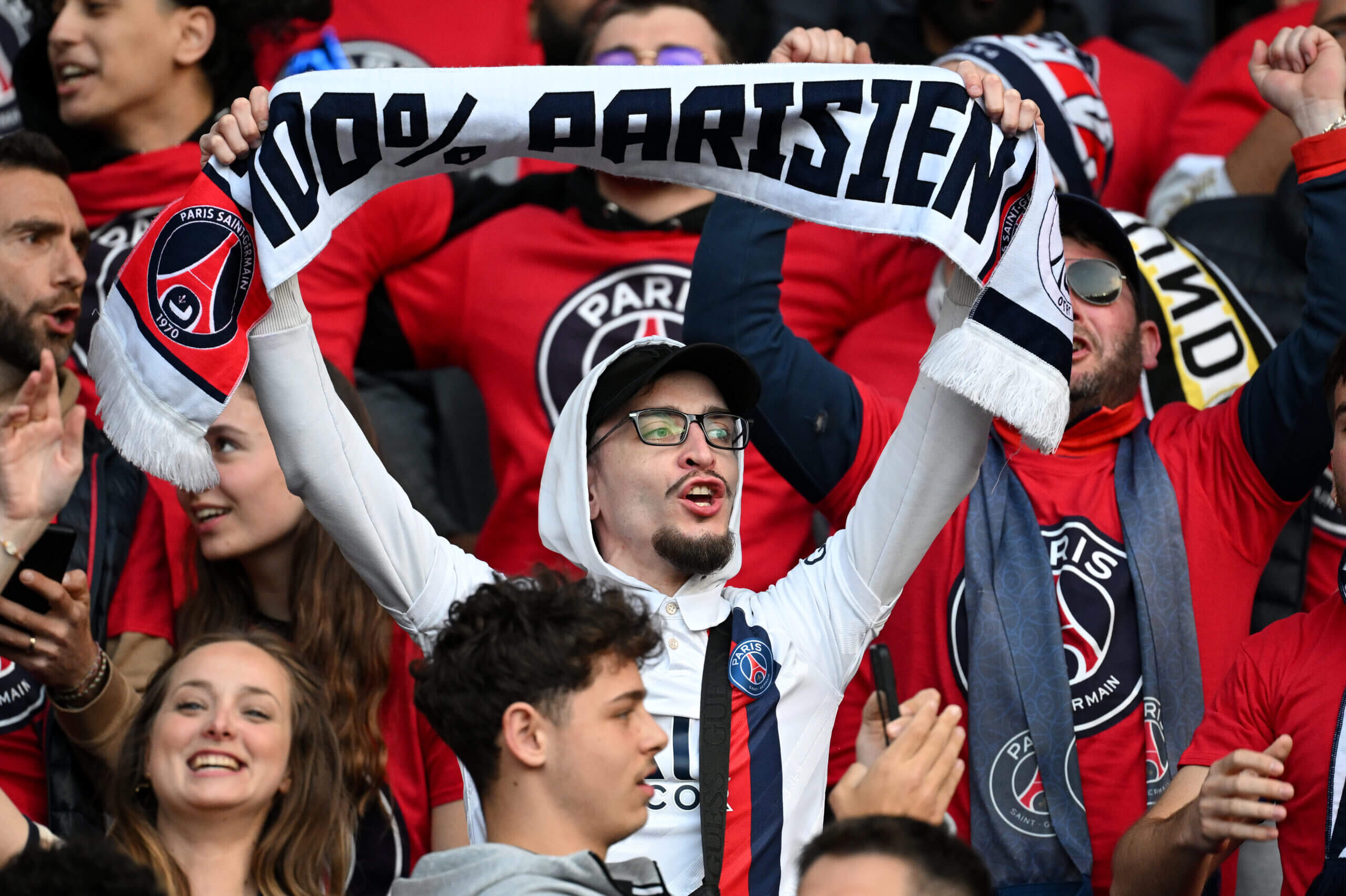
PSG are known as ‘Les Parisiens’ (Matthias Hangst/Getty Images)
RC Lens — Les Sang et Or (The Blood and Gold)
The identity of the city of Lens is deeply entwined with their football club. Lens is a mining city and the old slag heaps still loom over the city today.
Their nickname, Les Sang et Or, has been referenced as relating to the blood of miners and the gold of coal, but the shirt colours that inspire that nickname derive from different starting point. Initially, when the club was first founded in 1906, the team wore green and black (green for La Place Verte, where they played, and black for coal) but after the First World War, they changed colours to blue, white and red after the club were re-established post-war by the American Relief Committee.
It was in 1924 that red and yellow, the blood and gold, were established. New president Rene Moglia changed the team’s colours as a reference to the flag of Spain, which once occupied the Artois region in Northern France during the 16th and 17th centuries. Supposedly, Moglia was passing the post-war ruins of the Church of St Leger, which dates from that era, when he decided to make the change.
Racing Club de Strasbourg Alsace — Le Racing, Les Bleus et Blanc
Strasbourg’s club colours are blue and white, which is actually in contrast to the the traditional colours of Alsace, the region where the city of Strasbourg is situated. They are mainly red and white, including on the coat of arms for the city of Strasbourg.
Advertisement
Strasbourg were founded as FC Neudorf in 1906, when the city was part of the German empire. After the First World War, when Alsace was reintegrated into France, Strasbourg took its present-day name. That was thought to be influenced by the then pre-eminent Racing Club de France, who also wore blue and white.
Stade Brestois 29 — Les Ty’zefs, Les Pirates
Stade Brestois are sometimes referred to as Les Pirates and their mascot on matchday is a pirate named ‘Zef’ — no surprise for a club based on the cost in Britanny, north west France.
But Les Ty’zefs is the club’s true nickname. As we have seen at other clubs, this term is Breton and specifically Brest slang. Literally, it translates as ‘child of the wind’. This is a reference to the town’s identity. Brest is a port city, exposed to the elements. “At the end of the world, far from the big cities and surrounded by storms and rain,” as the club put it to The Athletic.
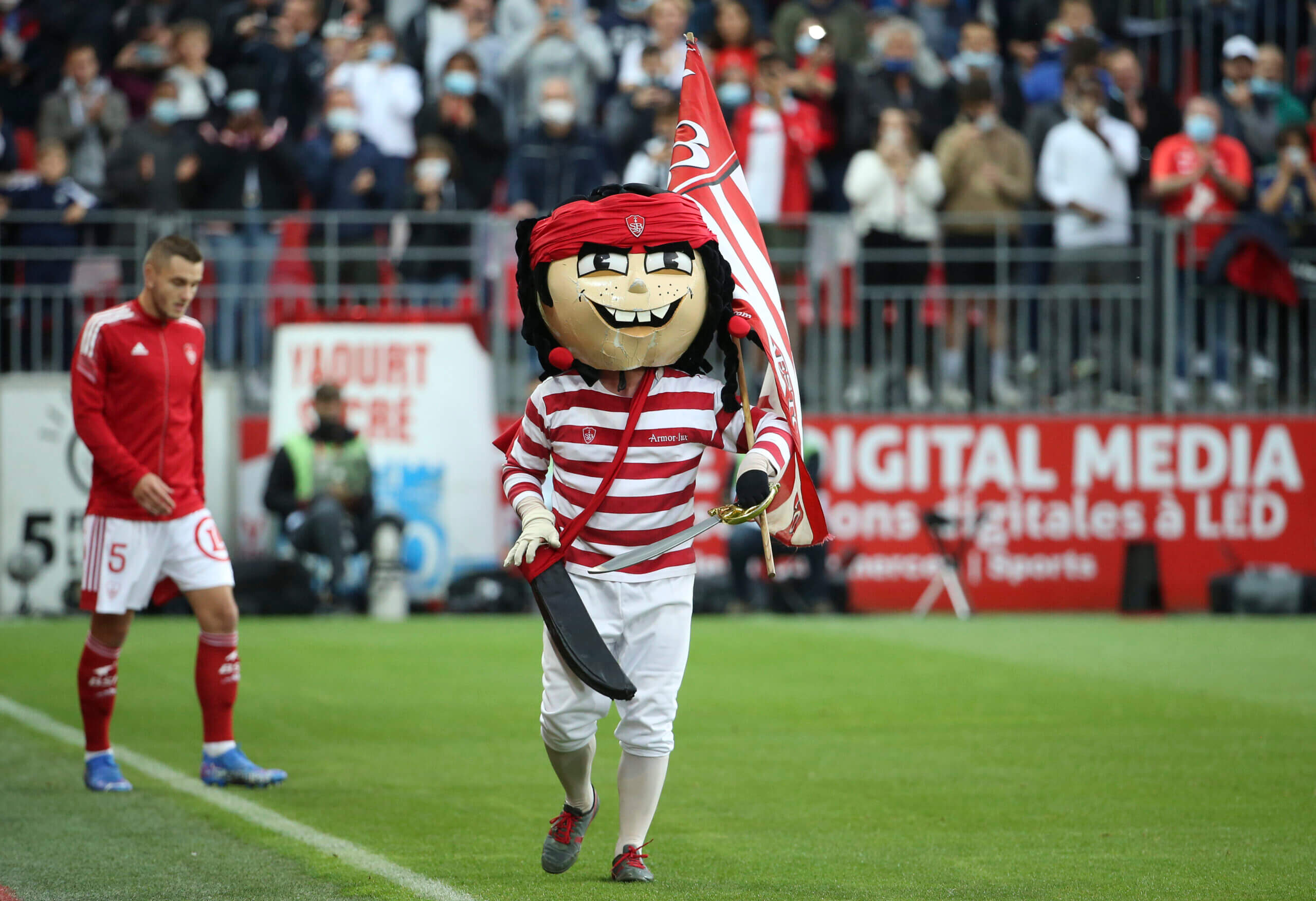
Say hello to Zef le Pirate (John Berry/Getty Images)
Stade de Reims — Les Rouges et Blancs
Reims are one of France’s most famous clubs. They were the leading French side of the 1950s and 1960s, winning six league titles and reaching the European Cup final twice, in 1956 and 1959, losing both times to Real Madrid.
The club evolved from a team known as Societe Sportive due Parc Pommery, formed in 1910 to bring together the workers of the Pommery Champagne house. In 1931, they changed their name but wore a Tango-orange shirt. In 1938, they merged with Sporting Club Remois. They kept the name but took the colours of Sporting. Their new colours and nickname were thus born.
Stade Rennais — Les Rouge et Noirs (the Red and Black)
Another colour-related nickname. Rennes, from the city of Rennes in Brittany, were formed in 1901 and initially wore sky blue and navy, but after a merger with FC Rennais, they kept their stripes but adopted the red and black they are known for today.
Historian Claude Loire has suggested that the colours, taken from FC Rennais, represent the secular spirit (red of the French republic) and the Catholic religion (the black referencing the colours of a priest’s cassock, or clerical clothing).
Advertisement
Toulouse FC — Le Tefece, Les Violets, Les Pitchouns
Le Tefece, in part, stems from how you pronounce Toulouse’s team name when abbreviated. Le Tefece is quite literally ‘T, F, C’.
Toulouse are also known as Les Violets and that stems from the city’s identity. Toulouse is often called the pink city because of the colour of its buildings and architecture, but it is also known as the ‘City of Violets’ because of its association with the eponymous flower. It has been cultivated since the 1850s and is the city’s emblem.
Les Pitchouns, meanwhile, is another little bit of local dialect and is an affectionate term for a small child.
(Design: Eamonn Dalton)
